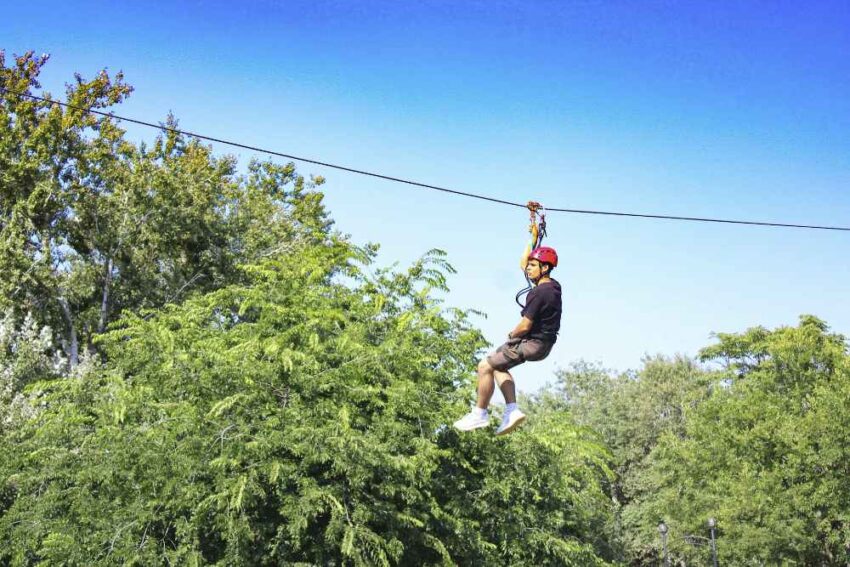Zip lining, an exhilarating outdoor activity that combines the thrill of speed with the beauty of nature, has grown immensely popular in recent years. However, like any adventure sport, it carries inherent risks. When accidents occur, understanding liability in zip line accidents becomes crucial for victims seeking justice and compensation.
The Basics of Zip Line Liability
Zip line accidents can result from various factors, including equipment failure, operator error, inadequate training, or poor maintenance. Determining liability involves identifying the party or parties whose negligence contributed to the accident. In zip line cases, potential defendants might include the zip line company, equipment manufacturers, tour operators, or even individual employees.
Common Causes of Zip Line Accidents
1. Equipment Failure: Zip lines rely on several critical components, including cables, harnesses, pulleys, and braking systems. If any of these fail due to manufacturing defects, wear and tear, or improper maintenance, accidents can happen.
2. Operator Error: Inadequate training or human error by staff can lead to accidents. This might involve incorrect setup, failure to follow safety protocols, or mishandling of equipment.
3. Inadequate Safety Measures: The zip line company is responsible for ensuring all safety measures are in place. This includes proper training for staff, regular equipment inspections, and clear safety instructions for participants.
4. Environmental Factors: Natural elements like strong winds, rain, or falling debris can create hazardous conditions, especially if the zip line operation fails to adjust or shut down during unsafe weather.
Determining Liability
Establishing liability in zip line accidents requires proving negligence. Negligence is the failure to exercise reasonable care, resulting in harm to another person. To establish negligence, the following elements must be proven:
1. Duty of Care: The defendant owed a duty of care to the plaintiff. In zip line operations, the company and its employees owe a duty to ensure the safety of their patrons.
2. Breach of Duty: The defendant breached this duty by acting (or failing to act) in a manner that a reasonably prudent person would under similar circumstances.
3. Causation: The breach of duty directly caused the plaintiff’s injury.
4. Damages: The plaintiff suffered actual harm or injury as a result.
Parties That May Be Liable
The primary responsibility for ensuring safety typically falls on the zip line operators. They must maintain equipment, provide proper training, and follow safety protocols. If an operator’s negligence leads to an accident, they can be held liable.
If an accident results from a defect in the zip line equipment, the manufacturer may be liable. This falls under product liability, where the manufacturer is responsible for producing safe products. Companies that organize zip line tours also bear responsibility for participant safety.
They must ensure the zip line operators they work with adhere to safety standards. If the zip line is on private property, the owner might be liable, especially if the accident resulted from a known hazard on the property that the owner failed to address.
Challenges in Proving Liability
Many zip line operators require participants to sign waivers acknowledging the risks involved. These waivers can complicate legal claims, but they do not necessarily absolve operators of liability for gross negligence or intentional harm. Determining the exact cause of a zip line accident often requires expert testimony.
Accident reconstruction experts, engineers, and medical professionals might be needed to establish the facts. In some cases, multiple parties might share liability, such as the zip line company, equipment manufacturer, and tour operator. This can make the legal process more complicated.
Legal Recourse for Victims
Victims of zip line accidents should take several steps to protect their rights and seek compensation:
1. **Seek Medical Attention**: Immediate medical evaluation is crucial for documenting injuries and receiving necessary treatment.
2. **Report the Incident**: Notify the zip line operator or tour company about the accident and ensure it is formally documented.
3. **Collect Evidence**: Gather as much evidence as possible, including photographs, witness statements, and any available maintenance records or safety protocols.
4. **Consult an Attorney**: An experienced personal injury attorney can help navigate the legal complexities, evaluate the case, and pursue compensation for medical expenses, lost wages, pain, and suffering.
Zip lining offers a thrilling experience, but accidents can and do happen. Understanding liability in zip line accidents is crucial for victims seeking justice. By identifying the responsible parties and proving negligence, victims can secure the compensation they deserve and hold negligent parties accountable.Make sure to get legal help for personal injury accidents, as it is essential to navigate the complexities of these cases and ensure a fair outcome.

